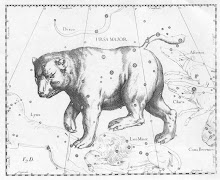(This post is also parallel posted to the grouperlab blog at grouperlab.blog/2018/09/17/countdown-sequence-start/ )
I started seriously thinking about the countdown when we hit 600. (I even started a blog entry about it, but I didn’t manage to finish ituntil we were crossing 500.) At 400, it became obvious that regular meetings would be needed and important. At 350, I created a timer. Now, as we approach 300, I can start to hear the ticking in my head.
I started seriously thinking about the countdown when we hit 600. (I even started a blog entry about it, but I didn’t manage to finish ituntil we were crossing 500.) At 400, it became obvious that regular meetings would be needed and important. At 350, I created a timer. Now, as we approach 300, I can start to hear the ticking in my head.
July 20, 2019.
The 50th
Anniversary of the Apollo 11 mission, and especially the moon landing, is a
primary emphasis of my administrative and engagement work for this year. It touches many of my connections on the
Purdue campus, as well as multiple existing partnerships and new conversations
around the State of Indiana. In one
sense, I am reminded of my preparations for race day when I was involved in competitive
rowing as a coxswain, dozens of years (and pounds) ago. Race preparation obviously doesn’t start when
you get in the boat a half hour before you hit the starting line. Often, the planning process works backwards:
if we want to be ready to row that race on that day, what do we
have to do today? What skills and drills
do we emphasize? What specific
contingencies do we practice? What can I
learn about my boat (not just the physical craft, but the four or eight people
who rely on me to steer straight, make the right decision, and earn their
trust) right now, that will make the difference days or weeks hence?
I still find myself
adopting that preparation model for events: lectures for class, public
interview and presentation opportunities, project management for the lab or a
research team or Space Grant activities.
The process gets more intricate and the need to connect gets stronger as
the scale gets larger. How do I channel
that passion well? What is the elegant
set of plans and preparations that allows me to use today to get us closer to
excellent execution on that day that seems both far off and approaching way too
fast. The more we discuss among our
Mission Operations “consoles,” the more I recall how deeply I feel the
importance and impact of December 1968 – July 1969, the first time we left
Earth. I am also more acutely aware that
not everyone feels this, and the purpose of this celebration is not just to get
everyone to connect to Apollo 8 or Apollo 11 the way I do (“my favorite
thing”). We must explore and connect how
many different ways people to connect to the variety of inspirations and
experiences of exploration – aviation, space, scientific discovery, engineering
innovation, inspiration and engagement and education of various types for each
unique individual and her or his special pattern of resonance.
This charge, more than
any other, underscores the need I feel for a palette of events, rather than
simply focusing on a single signature activity.
Neil flew a variety of aircraft from his childhood through his return
from the Moon; as a student, he played in the band and built and flew model
airplanes. By the time Purdue was
celebrating its centennial in 1969, Indiana had already played an outsized and
varied role in aerospace history (which many people still do not fully
appreciate). Balloons were employed to
deliver airmail before the Civil War.
The Wright family lived here, in Hagerstown; Wilbur was born there. Aircraft engines for World War I and II were
built here, and critical training for aviators (including the famed Tuskegee
Airmen) was led by those born, or living, or trained in Indiana. Amelia Earhart worked here, inspiring women
to fly and get their technical training.
All of that was in place before a youth from Wapakoneta, OH decided to
enroll at Purdue, overlapping with a slightly older student from Mitchell, IN,
who both had dreams to fly. Every one of
these stories is about dedication and planning and preparation.
Why do I take this so
seriously, and worry about the countdown so much? Unexpectedly, on the way back from the
National Space Grant Directors meeting (this year, during a beautiful late
summer oasis in Vermont), I got an answer – serendipitously, while writing this
entry. New colleagues from another Space
Grant consortium saw my pins and stickers, and asked about their effectiveness
in stimulating interest and engagement and enthusiasm for Space Grant
programs. Conversation drifted to
strategies for engagement with FIRST Robotics… after a few minutes, another
passenger comes over. She’s a scientist,
and passionate about FIRST and STEM education, and we end up having a good
conversation about our Space Grant mission.
Since I still consider myself something of an introvert, this type of
conversation is what preparation helps me do well.
But, over the next 306
days, there will be more people, and more opportunities, and more connections,
all to get from imagining to planning to excellent execution. Each day has new opportunities for meeting challenges
and enabling achievements, as well as the need to maintain wariness against new
surprises. The count goes on.













